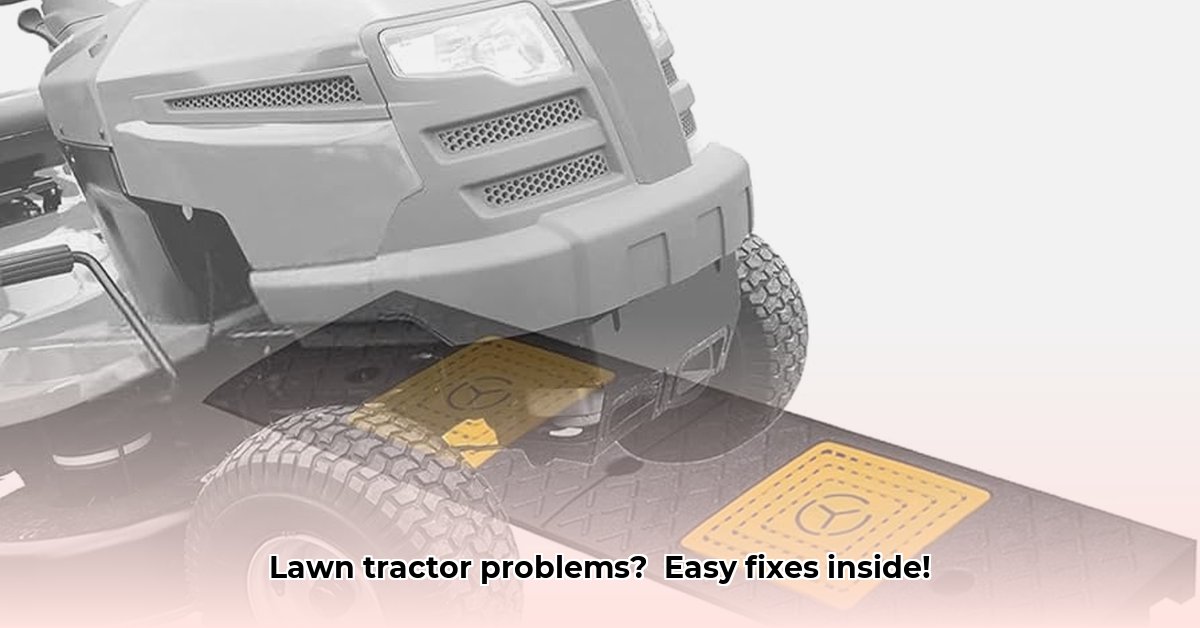
Choosing the Right Ramp for Your Lawn Tractor
Mowing a hilly lawn can be a real challenge. But what if conquering those slopes was easier? The answer? A sturdy, well-chosen ramp for your lawn tractor. Selecting the right ramp is crucial for both safety and efficiency. Don't underestimate this step; a poorly chosen ramp can lead to accidents and equipment damage. For added comfort, consider upgrading your seat; check out seat replacement options.
What factors should you consider when choosing a ramp?
First, your tractor's weight is paramount. Consult your owner's manual for the exact weight. The ramp's weight capacity must exceed this. Second, assess the slope's steepness. Steeper hills demand longer ramps to create a gentler incline. A longer ramp provides a safer ascent, reducing strain on your tractor. Third, choose the right ramp material. Metal ramps are durable and long-lasting but pricier. Treated wood is a more affordable alternative, but needs regular maintenance. Plywood is the cheapest option but requires reinforcement.
Finally, consider ramp length. A longer ramp creates a gentler slope, significantly improving safety. It's almost always better to err on the side of caution and opt for a longer ramp than you think you need.
| Material | Advantages | Disadvantages |
|---|---|---|
| Metal | Durable, strong, long-lasting | Expensive, heavy, susceptible to rust |
| Treated Wood | Relatively inexpensive, readily available | Requires maintenance, susceptible to rot |
| Plywood | Inexpensive | Needs reinforcement, shorter lifespan |
Building Your Own Ramp: A DIY Guide
Building your own ramp offers significant cost savings and allows for customization. Here's a step-by-step guide:
- Plan & Measure: Before you buy anything, carefully measure the incline and your tractor's dimensions. Sketch out your ramp's design, noting precise dimensions to ensure a safe and effective incline. Accuracy is paramount here.
- Gather Materials: Acquire pressure-treated lumber (essential for outdoor use), sturdy plywood for the ramp surface, strong screws or bolts, and any necessary bracing for extra support. Longer ramps need more bracing.
- Construct the Frame: Build a robust frame using the lumber. Ensure it can easily support your tractor's weight plus a safety margin. The frame's stability is critical.
- Attach the Ramp Surface: Securely fasten the plywood to the frame. Use enough fasteners to create a firm, non-slip surface. Consider adding a textured surface for extra grip.
- Add Supports (If Necessary): For longer ramps, add extra supports for added stability. This prevents sag and increases the ramp's load-bearing capacity.
- Test Thoroughly: Before using the ramp with your tractor, perform a test run using a lighter weight object. This helps identify any structural weaknesses or stability issues.
Safely Using Your Lawn Tractor Ramp
Prioritizing safety is paramount. Here's how to use your ramp safely:
- Position the Ramp: Place the ramp on solid, level ground. Ensure the surface is even to prevent tipping.
- Engage the Parking Brake: Always engage your tractor's parking brake before driving onto or off the ramp.
- Slow and Steady: Drive your tractor up and down the ramp slowly and smoothly. Avoid sudden acceleration or braking.
- Have a Spotter: If possible, have someone spot you. An extra set of eyes can prevent accidents.
- Regular Inspections: Regularly inspect the ramp for any damage, loose parts, or wear. Repair or replace anything that looks questionable.
Alternatives to Ramps
Sometimes, a ramp isn't practical. Consider these alternatives:
- Winch Systems: Powerful winches can pull your tractor up steep inclines, but they require a secure anchor point and proper training.
- ATVs or UTVs: These vehicles are designed for rough terrain and can transport your tractor.
Remember, a well-built ramp or a viable alternative makes lawn care on hilly terrain much safer and easier. Always prioritize safety and use your best judgment.